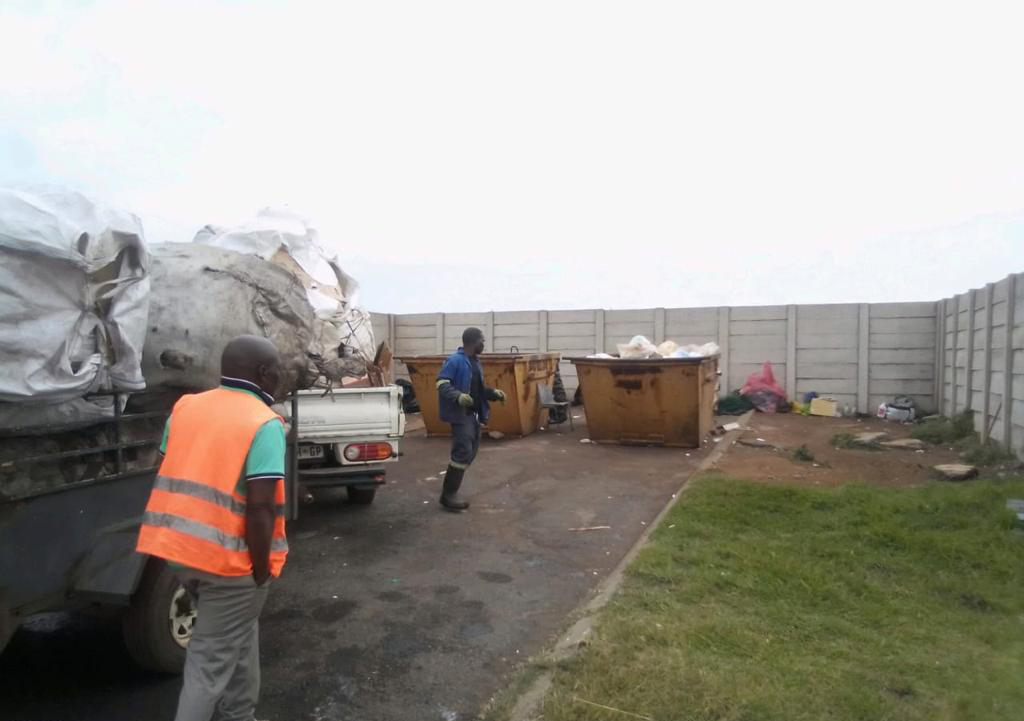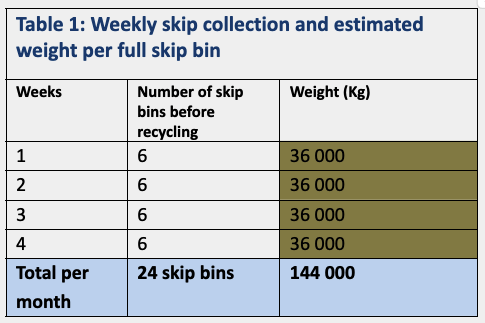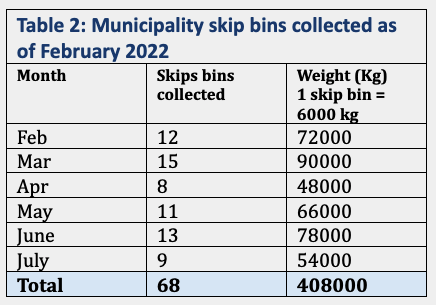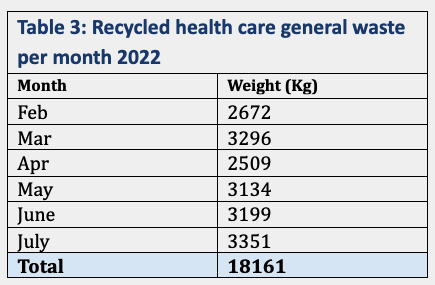Skip the skip bins: Hospital waste reduction and recycling improvement
Pholosong Hospital, South Africa
Case study summary
The project aims to reduce the waste that ends up in a landfill, promoting the zero-waste-to-landfill site initiative and reducing greenhouse gas emissions. The project was adopted as part of the Global Green and Healthy Hospital goals under waste in September 2019.
Demographic information
- City: Brakpan
- Province: Gauteng
- Country: South Africa
- Type of institution: Regional public hospital
- Number of full-time staff: 1,106
- Number of part-time staff: 253
- 252 000 patients served annually
- Geographic area served: 1.2 million
- Top health equity concerns experienced by population:
- Unemployment
- Lack of education
- Lack of municipal services such as poor sanitation ultimately hinders health and well-being
- Number of beds: 483

The issue
The project was initiated due to the large amount of waste generated and taken to a landfill site. The waste also causes pollution during the windy seasons. Recycling benefits the environment and subsequently the community’s health by ensuring land is preserved and reducing energy consumption and carbon emissions.

There was no way the project would have worked without management support, team work and community commitment. We have learned that we all have a role to play to ensure that our hospital/environment is clean. It was very difficult to quantify cost saving due to unavailability of contracts between the municipality and the hospital.
Hospital goals
- Reducing waste (zero waste to the landfill)
- Reducing waste costs
- Saving the environment by preventing pollution
- Promoting waste recycling through awareness and training
- Reducing greenhouse gas emissions
Implementation process
A motivational letter for the recycling project was written to management and approved by the CEO. The medical manager, clinical support manager, and environmental health team were key stakeholders. Teamwork, clear communication, and dedication among stakeholders and service providers were essential to this project’s success. Providing training for the staff and service providers instilled a positive culture surrounding recycling in the facility. The project is reviewed annually, and training is provided during that period.
Sustainability strategy implemented
The project took roughly four months from inception to implementation, and it is reviewed on a yearly basis. A schedule for daily monitoring of waste sorting ensures recycling is done as waste is generated. A receipt of disposal allows the environmental health department to confirm the amount of waste that has been recycled while ensuring land is preserved and energy consumption and carbon emissions are reduced. Most staff are aware of the project and participate in managing waste from the point of generation. All sorted recyclables are stored in waste bags for collection by the service provider.

Tracking progress
The team uses monthly and weekly record keeping to assess the amount of waste collected by the municipality for landfill disposal versus the waste that is recycled.
The project measured the frequency of recyclables collected by the service provider. The project has reduced the number of “skip bins” (known as a “dumpster” in the United States and Canada) collected from six skip bins prior to the start of the project to three skip bins per week. The current service provider recycling the waste receives an income of ±R4582 ($277.32 or €271,59) per month depending on weight.


Progress achieved
- A contracted service provider recycles the maximum waste that the facility generates.
- A waste information system has been developed.
- The amount of general waste has been reduced, making the hospital cleaner.
- The hospital has improved the morale of the community, and more community members are interested in recycling for the hospital and themselves.
The tables below show measured progress since project inception.

The facility has managed a 47% reduction since the inception of the project based on the number of skip bins being collected. The following are weights of recycled waste from February through July 2022.


Challenges and lessons learned
Due to billing issues with the municipality, waste was not being quantified correctly in monetary savings for the hospital. Project leaders observed that they cannot compare the mass of the waste collected by the municipality with the mass of recycled waste because the municipality includes the mass of the skip bin along with the waste inside it.
An additional challenge is that the hospital does not have a proper general waste storage area, so waste is exposed to natural elements that cause some recyclable items such as boxes and paper to become soiled. Weather conditions drastically reduce the rate of recycling.

Active involvement of various stakeholders as well as proper communication has contributed to the success of our project. We learned more about integrated waste management strategies and how they benefit our institution. Recycling reduces landfilling, reduces emissions of methane gases from landfill sites, reduces the rate of deforestation, and also creates jobs. Our organization is now generating less waste and as a result the amount of money we spend (for waste removal) has declined.
Next steps
- Implement recycling bins according to the type of waste. The pilot will take place in one department, as there is a challenge with segregation.
- Staff training and continuous inspections will be conducted to ensure proper waste management.
- Look into procurement policies to ensure some items that cannot be recycled are not purchased, as they end up in the waste stream.
